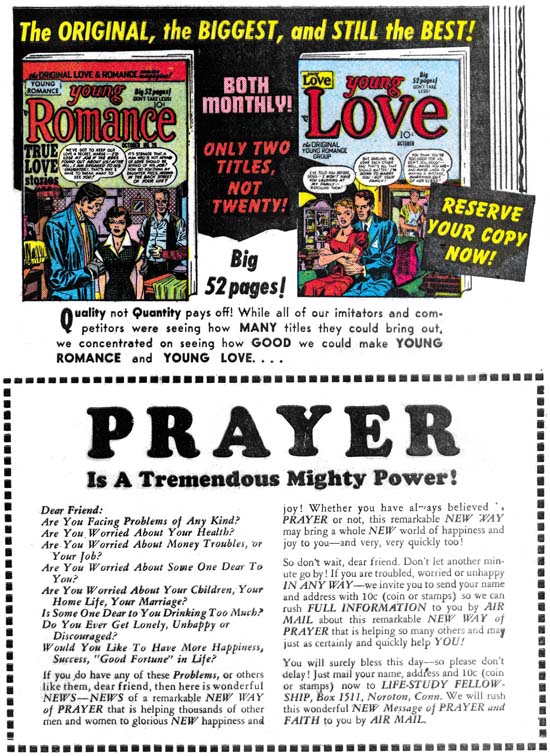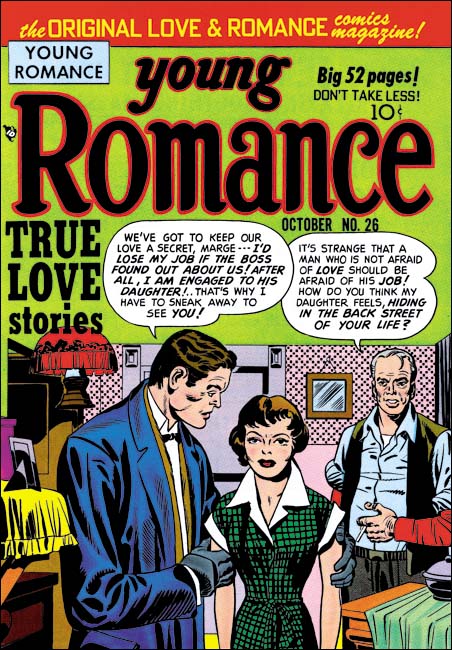As a general rule comic book fans are very derisive about modern art. They feel that comic artists show greater talent then the fine artists of the last century. Much of modern art is not predicated on realistic depictions. Comic fans, and many of the general public, feel the lack of realistic illustration characteristic of most modern art shows that it is nothing more then a trick played by the artists. Thus a big hoax has been perpetrated on the museums and art collectors of the world and only those who have not studied art history can see that the emperor has no cloths. The irony is that not only have these comic book fans failed to appreciate the goals of fine artists, they also seem ignorant of what comic artists are actually doing. A realistic depiction is not the aim of comic artists either. Invariably these artists are concerned with telling a visual story and realism is often sacrificed toward that end.
Probably no modern artist riles comic book fans more then Roy Lichtenstein. Lichtenstein became a famous Pop artist by transposing comic book art onto large painted canvases. There is a term fans use when one comic artist copies another, they call it swiping. It is not an accident that to swipe was originally a slang expression for to steal. For comic fans it was bad enough that Lichtenstein was swiping from comic artists, what was even worse was his paintings sold for thousands of dollars while the original comic book artist generally struggled to make a living. History adds insult to this story. Let me repeat part of a post I once did where I am talking about comic book artists Irv Novick (from Simon and Kirby Meet the Shield).
Although it is frequently cited that Irv did superhero work for MLJ until 1946, in fact, like many artists, Irv spent some time in the military. During that time Irv befriended Roy Lichtenstein, getting him out of manual work and helping Roy get a job that used his artistic talents. Of course no good deed goes unpunished, after the war Lichenstein became a highly paid pop artist by painting greatly enlarged copies of comic book art originally drawn by a variety of comic artists, including Irv Novick.

Example from “Deconstructing Roy Lichtenstein”
Comic fans’ criticism of Lichtenstein has however missed the mark. Even realistic artists depict their subject matter through their own personal filter. No matter how realistic an artist tries to be or how technically talented he is, the final painting will not truly match the source. In truth it is not how realistic a piece of art is that determines how good it is, more important is how well the artist brings forth his personal vision. Roy Lichtenstein’s work is different only in his subject matter, instead of painting landscapes, portraits, or abstracts, at one time Lichtenstein painted comic book art. Lichtenstein’s paintings are not identical copies of comic book panels. There is a marvelous web site call Deconstructing Roy Lichtenstein that provides examples of Roy’s paintings and the comic book source they were based on. Again and again they final painting deviates from the source. Some of it is editorial changes to improve the effect of the work. After all a painting stands by itself while the original source is just one panel in a sequence of panels telling a story. Coloring would also be adjusted by Lichtenstein. Even the famous Benday dots are actually Lichtenstein’s inventions and have nothing to do with the printing of the original comic book art. The line art was often adjusted by Roy. It would be nice to be able to say that Roy improved the line art, but in fact the final image often is inferior to the source. Lichtenstein could never had been successful as a real comic book artist.
Although I disagree with the criticism leveled by comic book fans at Roy Lichtenstein that does not mean that I approve of his work. I am not bother by his copying comic book art but I do dislike his attitude towards his source. Lichtenstein’s paintings treat the comic book art as camp. The Pop art world could enjoy the impact of the original comic book art but since it was presented as a fine art painting they could view it with a amused sense of superiority. Fine art is supposed to provide more levels of meaning then that found in popular art. Frankly in the case of Roy Lichtenstein’s comic book paintings I just do not find enough deeper meaning to justify his condescending attitude toward comic book art.

“Just what is it that makes today’s homes so different and appealing?” collage by Richard Hamilton made in 1956.
Image from The Burlington Magazine (September 2007)
My criticism of Roy Lichtenstein does not apply as well to all Pop art. A case in point it the collage by Richard Hamilton, an image of which I provide above. Yes the presence of the Young Romance cover art in the collage does give this work of art special significance for me, more about that below. The comic book art plays only a small portion of the total effect of collage, the same can be said of all the individual pieces. Collages have a special magic, at least when done by an artist with talent. The components of the collage adopt two identities. The individual pieces become part of a bigger image while still remaining recognizable as being clipped from some printed source. The title of the piece (“Just what is it that makes today’s home so different and appealing?”) sounds like it belongs to an article in some home decor magazine. Which makes the image along with all its individual components all the more incongruous. Hamilton’s collage does have a sense of camp to it, but in this case I get the feeling I am a partner in the humor and not the blunt of it. Despite the fact that Hamilton seems to be pocking fun at American middle class society, he seems to have a genuine fondness for each piece of collage element that he uses.

Young Love #15 (November 1950) house ad with the original cover art of both covers by Jack Kirby
There is a reason that I am discussing Hamilton’s collage at this time. The latest issue of The Burlington Magazine has an article on it by John-Paul Stonard. In researching the piece John-Paul has managed to track down the source of most of the collage elements. Interestingly all the parts seem to come from American sources dating prior to 1956. It seems another British artist, John McHale who at the time was studying at Yale, sent a trunk full of material to Hamilton and that formed the basic source for the collage. Unfortunately one of the sources that has not been tracked down is the Tootsie Roll candy that plays such a prominent part of this art piece. The wrapper displays “POP”, a word coined in 1954 to describe the art movement.
The Young Romance “painting” lead Stonard to the Jack Kirby Museum and Rand Hoppe, and Rand in turn lead John-Paul to me. The image provided of “Just what …” may give the impression of a large piece when it actually is about ten inches wide. What appears to be a Young Romance #26 cover clearly is too small to be the actual cover and had to be some sort of house ad. I did a careful search of all the Simon and Kirby productions from about when Young Romance #26 came out (October 1950) up to 1956 the year the collage was made. There were two different ads that the YR #26 was used in. There was a size difference between cover image used in the one variant (used in YL #13) and the second (use in YL #14, #15, YR #27). John-Paul said that the size of the second ad was the correct one. When I sent John-Paul a scan I thought that was as close we were going to be able to come in identifying the source. John-Paul however immediately noticed that the comic title in the scan I provided were in white characters while the one used in the collage were red. When I reviewed the ads again I found only one of the house ads had red letters in the YR #26 image. Thus we could be sure that the source of the collage YR image came from the house ad from Young Love #15.

Young Romance #26 (October 1950) art by Jack Kirby
I like the fine arts, but my main interests in recent years has been the comics produced by Simon and Kirby. So I did not want this post only to have an image of the cover of Young Romance #26 as a faded piece in Hamilton’s collage, or even a better version found in the original house ad. Instead I wanted an image of the cover as close as I could make it to how it looked when it first appeared on the newsstands. I believed romance covers always posed a special problem for Jack Kirby in that he could not include action to make an interesting cover. To help compensate, Kirby turned to the use of visual props. I particularly like the way he has placed some in front of the characters. This gives the image a greater feeling of depth and prevents it looking like the people are standing in front of a stage setting. To do so though, Jack had to place some furniture and a shelf at what are really odd angles compared to the rest of the room. But as I have previously commented, comic covers are not meant to be realistic as if taken from a photograph. Usually it is time that is played around with in order to present what actually is a condensed story, here it is space. The only thing that bothers me about this cover is the wallpaper, I find the pattern too distracting.
I admit that I get something out of Simon and Kirby productions, particularly the romance work, that was not part of their original intentions. It is not the sense of camp that Roy Lichtenstein and his admirers enjoy. Rather it is a reflection of the changing attitudes. I am sure the melodrama was probably a bit over the top even when it was published but I doubt it would even be considered a reasonable premise today. But then again today there are no more romance comics. I wonder about manga?


The “camp-satire” argument for justifying Lchtenstein’s theft falls apart when one notes that he did this repeatedly, and often from he same artist more than once. The Supreme Court ruled that Dan O’Neill’s “Mickey Mouse Meets the Air Pirates” lost its protection as satire when he came out with a second issue. The same principle applies here. Frankly, I think a campaign to encourage the Lchtenstein’s estate to make a sizable donation to the Milt Gross Fund and Heroes Initiative might be in order. There are plenty of cartoonists suffering because their life’s work is not providing for them in their time of need. Without these talented cartoonists, Lichtenstein would never have made a dime.